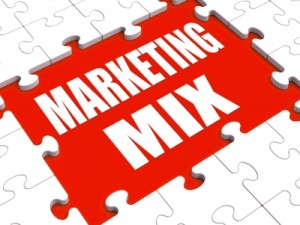 Steve Sipress
Head Rhino & Chief Strategist
Steve Sipress
Head Rhino & Chief Strategist
MaryEllen Tribby: Stop Focusing On One Channel Of Marketing At A Time!

Image courtesy of Stuart Miles/ FreeDigitalPhotos.net
People often hear the term multi-channel marketing and ask if it is the same thing as multi-level marketing.
The answer is no, definitely not, no way!
Multi-level marketing (MLM), as defined by Wikipedia is also called network marketing, referral marketing, and pyramid selling. It is a term that describes a marketing structure used by some companies as part of their overall marketing strategy. The structure is designed to create a marketing and sales force by compensating promoters of company products not only for sales they personally generate, but also for the sales of other promoters they introduce to the company, creating a downline of distributors and a hierarchy of multiple levels of compensation in the form of a pyramid.
The products and company are usually marketed directly to consumers and potential business partners by means of relationship referrals and word of mouth marketing.
This is NOT multi-channel marketing.
WHAT IS MULTI-CHANNEL MARKETING (MCM)?
Multi-channel marketing is simply offering customers and prospects more than one way to buy.
It is leveraging successful direct response marketing into a cohesive campaign that consists of different channels of marketing. It includes all channels of online and offline marketing.
Think about the way people you know buy things. Now try to answer the questions below.
Question #1: Do you think an 80-year-old grandmother in Stanford, Connecticut, who has a passion for gardening buys through the same channel as a 21-year-old man who loves to surf in Venice Beach, California?
Question #2: Do you think that they are both good prospects for, or have responded to, a multi-channel marketing campaign?
If you said “no” to question #1, you are correct. And if you said “yes” to question #2, you are correct.
Let’s say the grandmother in our example wants a new pair of gardening gloves. She receives a direct-mail offer showing a beautiful picture of the gloves at a reasonable price. The offer comes from the same company that sold her a new shovel a year ago. The good price, the picture, the timeliness of the ad, and her comfort with the company all combine to make her interested in buying the gloves. But part of Granny still thinks she can get one more year out of her old gloves.
The very next day, she sees a TV commercial for the very same gloves. And the commercial features an 800 number that makes it easy to order. So she picks up the phone and orders. Five days later, she is enjoying her new gloves.
And let’s say our 21-year-old surfer wants a new surfboard. He’s already gotten numerous sales calls via telephone from the same company that sold him his first board. But he is not ready to buy a new one without seeing it first. It doesn’t matter that he’s familiar with the company. It doesn’t matter that they are offering a convenient payment plan. He refuses to buy a new board without first seeing it with his own eyes.
As luck (or good marketing) would have it, a couple of days later he receives an email from the same company offering the same board with the same payment plan. But the e-mail includes a 90-second video of the board that showcases its benefits. He orders it immediately online.
These examples show how important it is to market your products through multiple channels. Different people respond to advertising in different ways. And very often your customers or potential customers need to see offers more than once before they make the decision to buy.
In both of the cases above, the customers needed to have the same message delivered via a different channel in order to make the purchase.
Had the companies in question marketed through only a single channel, both sales would have been lost. Plus, both companies now have customers who have purchased through two different channels— and studies have shown that there is a direct correlation between the number of channels a buyer has responded to and his lifetime value to the company. A study by the Direct Marketing Association [DMA] found that customers who buy from two channels rather than one are between 20 and 60 percent more valuable to a company over time. Customers who buy from three channels rather than one are 60 to 125 percent more valuable.
Another benefit: Multi-channel buyers purchase a wider range of products. Therefore increasing their lifetime value.
Successful companies have been implementing multi-channel marketing campaigns for years.
However even today, some companies are still afraid to experiment with multi-channel marketing. They market through only a single channel, the channel that they are most comfortable with.
This is a common mistake. And companies that insist on pursuing a single marketing channel remain indefinitely in the infancy stage of business growth.
Remember how the hyper-successful pop-up ads of the early 2000s took a huge dive in popularity and efficacy? Marketing is cyclical. You need to position yourself to reach your customers the way that they want you to reach them.
Once you understand and apply the secrets of multi-channel marketing, you will discover that your customers are happier. And having happier customers means a healthier business.

Recent Comments